 The Chinese “Romeo”
The Chinese “Romeo”
Chinese PLAN (1963-84) – 2+84 boats: 126, 140, 142, 143, 153, 172, 176, 208-2012, 227-229, 245, 248, 249, 254, 267-270, 281-283, 52 more
By far, the most common Submarine type in service with the PLAN during the early 1980s were the Type 033, the Chinese “Romeo”. Indeed, they all had been built in China, with Soviet assistance and over Soviet blueprints at first, as part of the 1950 Sino-Soviet Friendship and Mutual Assistance Treaty, but with Chinese-designed components and many improvements from 1962 to 1984. That was a massive undertaking for China at the time, which led to the next domestic Ming class.

Genesis – About the “Romeo”
After the “Whiskey” (about 250 delivered), also produced in China as the Type 03, the Soviet type Project 633 (NATO id R or “Romeo”) was another success-story type in service with the Soviet Navy and many others, 133 being delivered until the 1980s. The last ones were only made for export, used by North Korea, Bulgaria, Syria, Egypt and Algeria. This was a technological quantum leap compared to the previous Project 613 and 611 (NATO Whiskey and Zulu) although still a conventional diesel-electric type, but short-lived. In December 1961 indeed, the Soviet submarine force swapped to the nuclear type (NATO “N” or November).
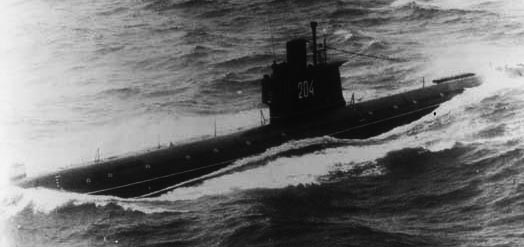
Therefore only 20 of the initial order of 56 was completed at that date. Production, however, went on by China and through exports. Most are retired today, although these submarines still had some value as local patrol submarines. Overall, these were retained in service after the Soviet Union collapsed for training in various fleets, and perhaps two are still today in use for static harbor use. Over time, the Romeo was exported at a fair price : Bulgaria operated a single boat (Slava) until the 2000s, the last of the time in active service worldwide. Syria received three boats in 1961, and Algeria two, now retired.
Production in China
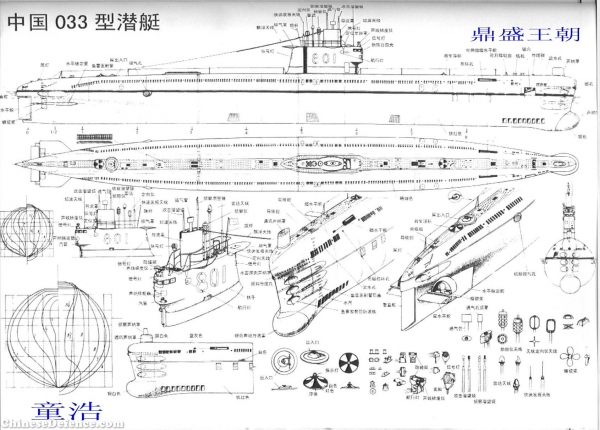
About the time blueprints were received, production allegedly started in 1962 whereas documentation arrived in 1963 meaning the first to be built were kits and “regular” production started from 1963. These indeed were six boats known as the Type 6633. However the Chinese started the design of their own model with some improvements, which is properly called the “Type 033”.
Indeed, the first to be completed was in 1967. Just after the Sino-Soviet split and therefore the PLAN has to be self-reliant in the design and construction of this model, which featured improvements over the regular “Romeo” (see later). At the end of their career, these submarines were upgraded, while production was relaunched for export: The ES5A and later upgraded ES5B for Egypt (1984), and the domestic 033G/G1 (NATO Wuhan Class) major upgrade for PLAN’s boats and its missile variant (SSG).
Production of the Type 033 took place at:
- Wuchang Shipyard (Wuhan)
- Guangzhou Shipyard (Canton)
- Jiangnan Shipyard (Shanghai)
- Bohai Shipyard (Huludao)
North Korea also uses the type, assembled at Mayang-do Naval Shipyard assembly site from knock-down-kits and another batch with spare parts (photo).
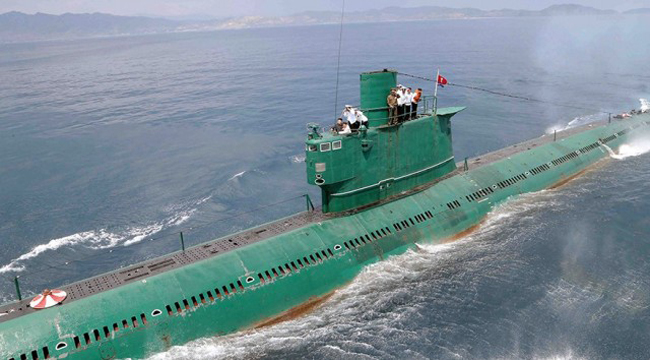
The Chinese “Romeo” design and variants
The Type 6633:
This was the early version, obtained from the assembly of knock-down kits provided by USSR. Over 6 kits planned to be assembled only 2 were so completed however. Indeed this program cut short when diplomatic situation degraded with the USSR. Parts were no longer delivered after the Sino-Soviet split. The 3rd unit lay incomplete at Wuhan Naval Yard. The first pair was completed but extra parts had to be to be designed and crafted locally. Therefore the Type 6633 was already a Chinese boat, diverging from the original “Romeo” as it notably used domestic Chinese batteries, which claimed superior performances compared to the Soviet model. The two boats were introduced in the PLAN possibly in 1964. Their fate is unknown.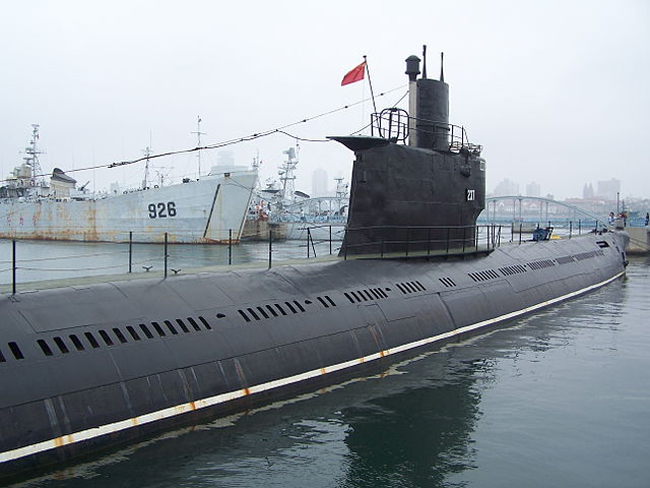
The Type 033:
This was the main Chinese type. It was done in 1967, after trying to reverse-engineering and replicate the third Type 6633, devoided of most of its parts. It seems the first completed boat was delivered in 1967. The project Type 033 according to the year on the Chinese traditional calendar. Like the third 6633 which was mostly made of replicated parts according to the blueprints, and with Chinese batteries, the type was externally very close to the Soviet model.
However, since most boats were deployed initially on the south China sea it appeared their refrigeration and air conditioning systems, designed for cold and dry climates was totally inappropriate and has to be replaced. The South China sea’s boats all undergone a refit of these systems. This process started in September 1969 at Huangpu Shipyard in Guangzhou. 13 of these “tropicalized” versions were delivered to the China’s PLA in the 1970s.
The Type 033G/G1:
The 033G was a development of the ES5A in the 1980s. It included a range of improvements like:
- Acoustic homing torpedoes launching system
- Modern analog computers for the firing system
Type 033G1 or NATO Wuhan class (1976):
This denomination Wuhan or Wuhan A according to the Wuhan 701 naval institute is not widely recognized but is found in some literature and reports back when the type was discovered. A single Type 033G was completely rebuilt as an SSG (diesel-electric, missile attack sub) to carry and fire six YJ-1 (NATO id CSS-N-4) anti-ship missiles. The missile could only be fired on the surface and the process lasted for 7 minutes. The missiles have a radar homing to 40 km (22nm) at mach 0.9. They are of the sea-skimming type, carrying a 165kg warhead. They are guided by a Type 358G fire-control radar.
The torpedoes’s own passive homing/range is 15 km at 40 knots, carrying a 400 kg warhead. Also, noise reduction was greatly improved, lowering the sub signature by 12 dB, so 108 dB total compared to the original Soviet boats’ acoustic signature of 160 dB. However the missile capability is not capable of over-the-horizon targeting. This trial boat was not followed by any conversion and ended service either in the late 1990s or even 2001 (Hazegray).
The Type ES5:
In the late 1970s after China operated a rapprochement to the west, and more modern electronic and guidance systems were obtained. This was an upgrade, applied to the oldest of the boats in order. It mainly consisted in fitting better navsatcom and optical systems, improved domestic systems:
- QZHA―10 (Type 779) attack periscope
- QDYA―10 (Type 778) general purpose periscope
- H/SQG-2 ranging sonar
- Type 063 communication/countermeasure systems.
- Type 801 sonar (2x more transducer elements)
- H/SQZ-D reconnaissance sonar (+15° range)
- Noise reduction measures
The ES5A was exported to Egypt, four boats of this upgraded type in 1980 and four more of the evolved ES5B in 1984. The latter was development from the Type 033G, and intended for export as well as an upgrade package for all Romeo submarine in service. This included:
- Wire guided torpedo launching system
- Anti-ship missiles (AShM) launching system
- Noise reduction of 20 dB (120 vs 160 dB)
A montage of photos of the Egyptian ES5/ES5A type. The Ming class was partly elaborated from these upgrades.
Bulgarian Type R “Slava”, probably the last in service anywhere, now retired.
Read More/Src
- http://www.russianwarrior.com/STMMain.htm?1947vehicle_Whiskeyhist.htm
- https://militaryedge.org/armaments/r-class/
- https://en.wikipedia.org/wiki/Romeo-class_submarine
- https://www.globalsecurity.org/military/world/china/romeo.htm
- https://en.zamanalwsl.net/news/article/34567/
- https://archive.is/20130628082803/http://m.huangpujs.cn/wap.php?action=article&id=2594
- https://www.globalsecurity.org/military/world/china/wuhan.htm
- https://web.archive.org/web/20121105151620/http://www.sinodefence.com/navy/sub/type033romeo.asp
- https://web.archive.org/web/20090328132224/http://www.sinodefence.com/navy/sub/type035ming.asp

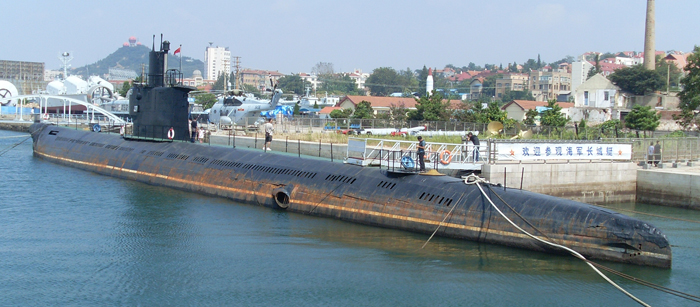
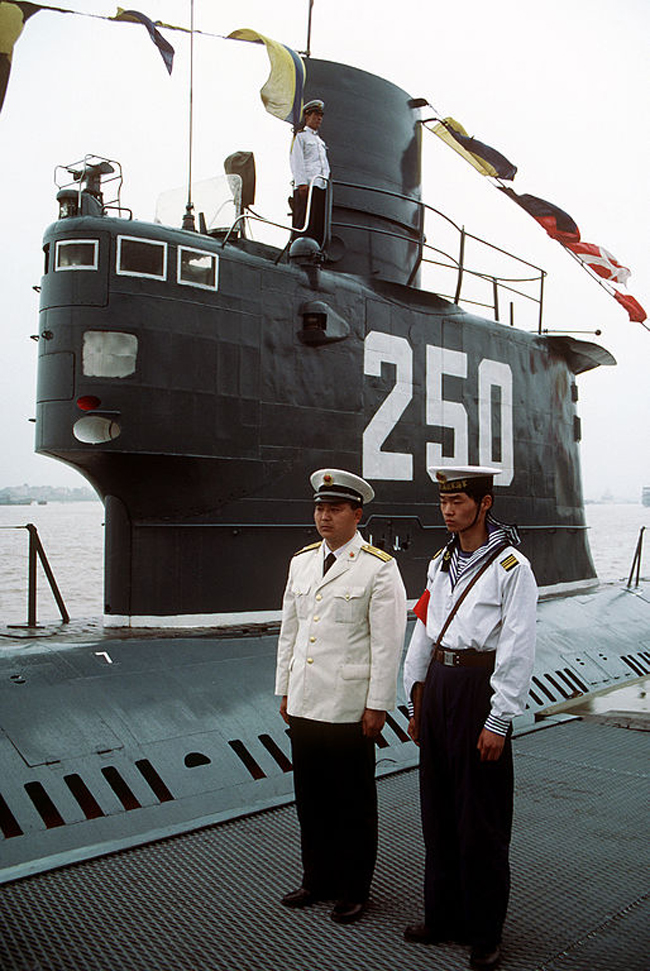
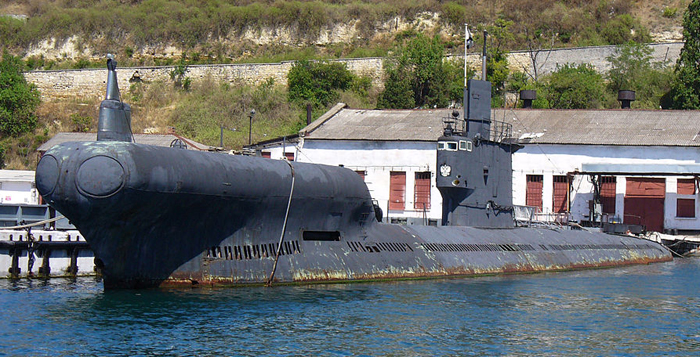
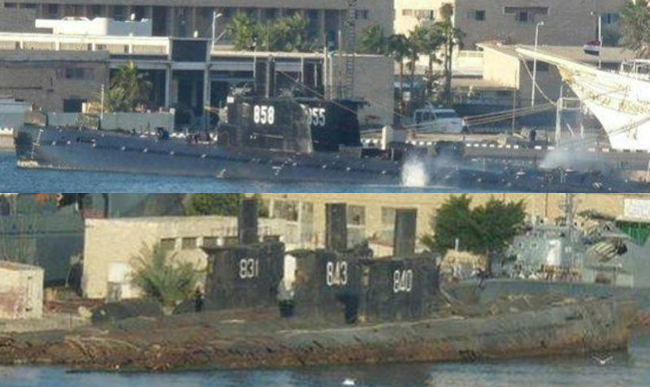
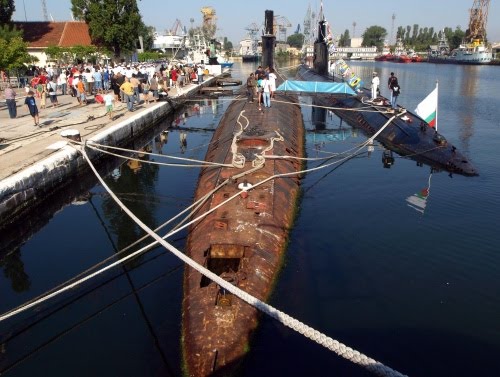
 Latest Facebook Entry -
Latest Facebook Entry -  X(Tweeter) Naval Encyclopedia's deck archive
X(Tweeter) Naval Encyclopedia's deck archive Instagram (@navalencyc)
Instagram (@navalencyc)





 French Navy
French Navy Royal Navy
Royal Navy Russian Navy
Russian Navy Armada Espanola
Armada Espanola Austrian Navy
Austrian Navy K.u.K. Kriegsmarine
K.u.K. Kriegsmarine Dansk Marine
Dansk Marine Nautiko Hellenon
Nautiko Hellenon Koninklije Marine 1870
Koninklije Marine 1870 Marinha do Brasil
Marinha do Brasil Osmanlı Donanması
Osmanlı Donanması Marina Do Peru
Marina Do Peru Marinha do Portugal
Marinha do Portugal Regia Marina 1870
Regia Marina 1870 Nihhon Kaigun 1870
Nihhon Kaigun 1870 Preußische Marine 1870
Preußische Marine 1870 Russkiy Flot 1870
Russkiy Flot 1870 Svenska marinen
Svenska marinen Søværnet
Søværnet Union Navy
Union Navy Confederate Navy
Confederate Navy Armada de Argentina
Armada de Argentina Imperial Chinese Navy
Imperial Chinese Navy Marinha do Portugal
Marinha do Portugal Mexico
Mexico Kaiserliche Marine
Kaiserliche Marine 1898 US Navy
1898 US Navy Sovietskiy Flot
Sovietskiy Flot Royal Canadian Navy
Royal Canadian Navy Royal Australian Navy
Royal Australian Navy RNZN Fleet
RNZN Fleet Chinese Navy 1937
Chinese Navy 1937 Kriegsmarine
Kriegsmarine Chilean Navy
Chilean Navy Danish Navy
Danish Navy Finnish Navy
Finnish Navy Hellenic Navy
Hellenic Navy Polish Navy
Polish Navy Romanian Navy
Romanian Navy Turkish Navy
Turkish Navy Royal Yugoslav Navy
Royal Yugoslav Navy Royal Thai Navy
Royal Thai Navy Minor Navies
Minor Navies Albania
Albania Austria
Austria Belgium
Belgium Columbia
Columbia Costa Rica
Costa Rica Cuba
Cuba Czechoslovakia
Czechoslovakia Dominican Republic
Dominican Republic Haiti
Haiti Hungary
Hungary Honduras
Honduras Estonia
Estonia Iceland
Iceland Eire
Eire Equador
Equador Iran
Iran Iraq
Iraq Latvia
Latvia Liberia
Liberia Lithuania
Lithuania Mandchukuo
Mandchukuo Morocco
Morocco Nicaragua
Nicaragua Persia
Persia San Salvador
San Salvador Sarawak
Sarawak Uruguay
Uruguay Venezuela
Venezuela Zanzibar
Zanzibar Warsaw Pact Navies
Warsaw Pact Navies Bulgaria
Bulgaria Hungary
Hungary

 Bundesmarine
Bundesmarine Dutch Navy
Dutch Navy Hellenic Navy
Hellenic Navy Marina Militare
Marina Militare Yugoslav Navy
Yugoslav Navy Chinese Navy
Chinese Navy Indian Navy
Indian Navy Indonesian Navy
Indonesian Navy JMSDF
JMSDF North Korean Navy
North Korean Navy Pakistani Navy
Pakistani Navy Philippines Navy
Philippines Navy ROKN
ROKN Rep. of Singapore Navy
Rep. of Singapore Navy Taiwanese Navy
Taiwanese Navy IDF Navy
IDF Navy Saudi Navy
Saudi Navy Royal New Zealand Navy
Royal New Zealand Navy Egyptian Navy
Egyptian Navy South African Navy
South African Navy






























 Ukrainian Navy
Ukrainian Navy dbodesign
dbodesign
Hi,
Very nice photos and an excellent source for painting and completing my model.
Thanks.
Stay safe and good fortune.
Mike
You’re welcome !